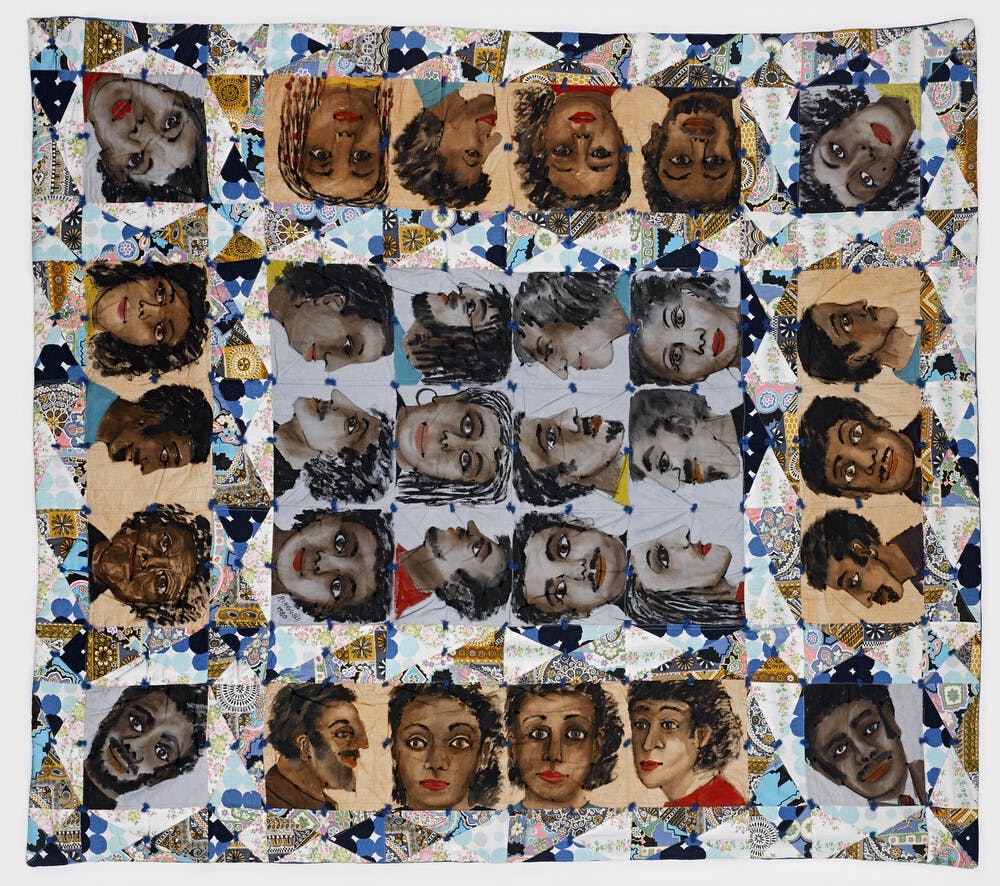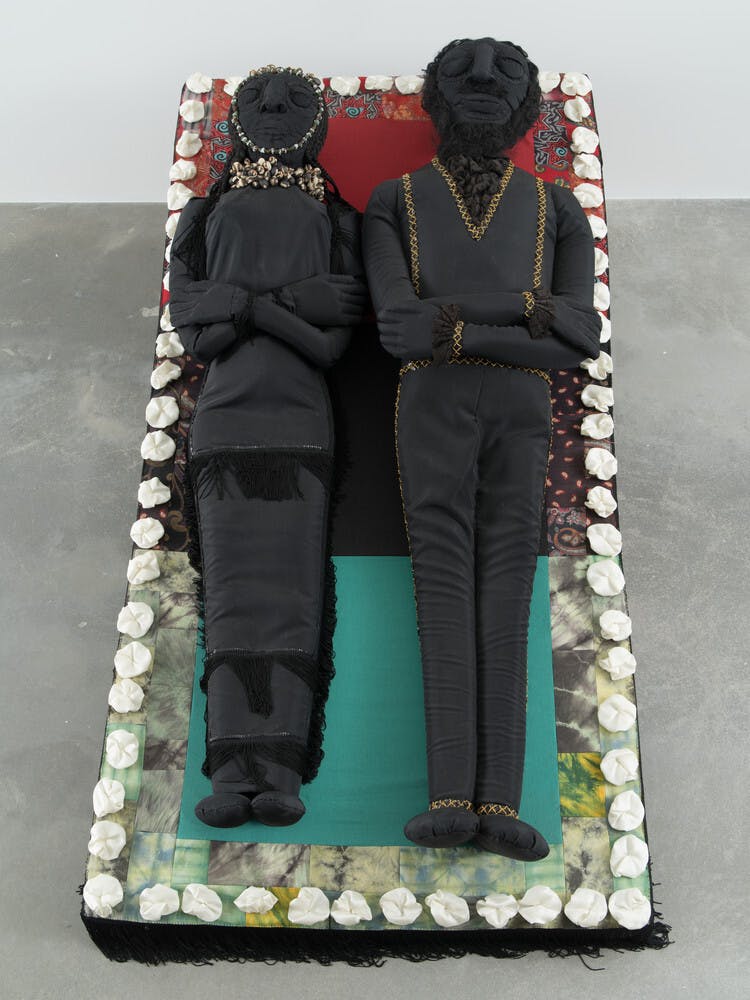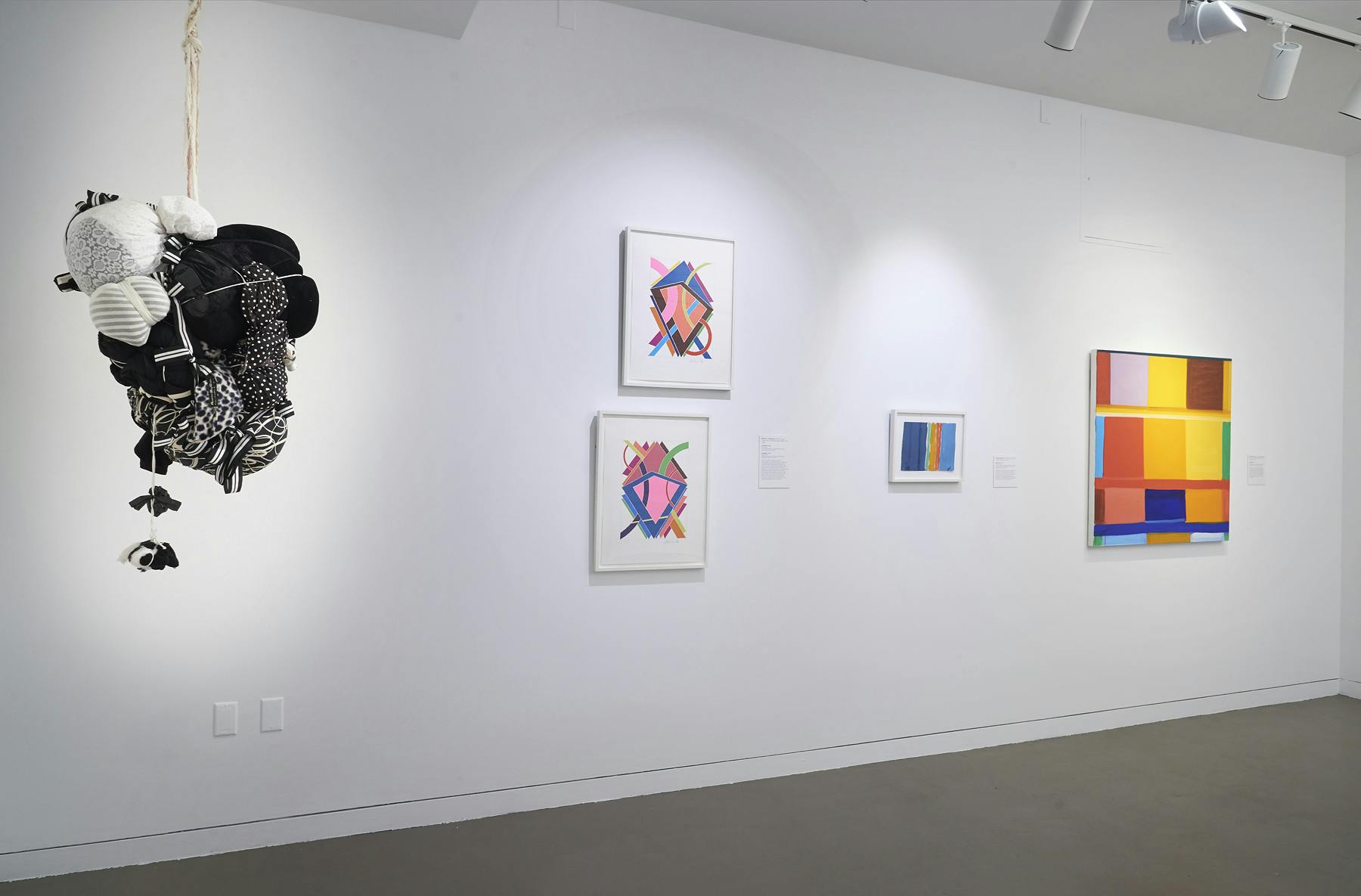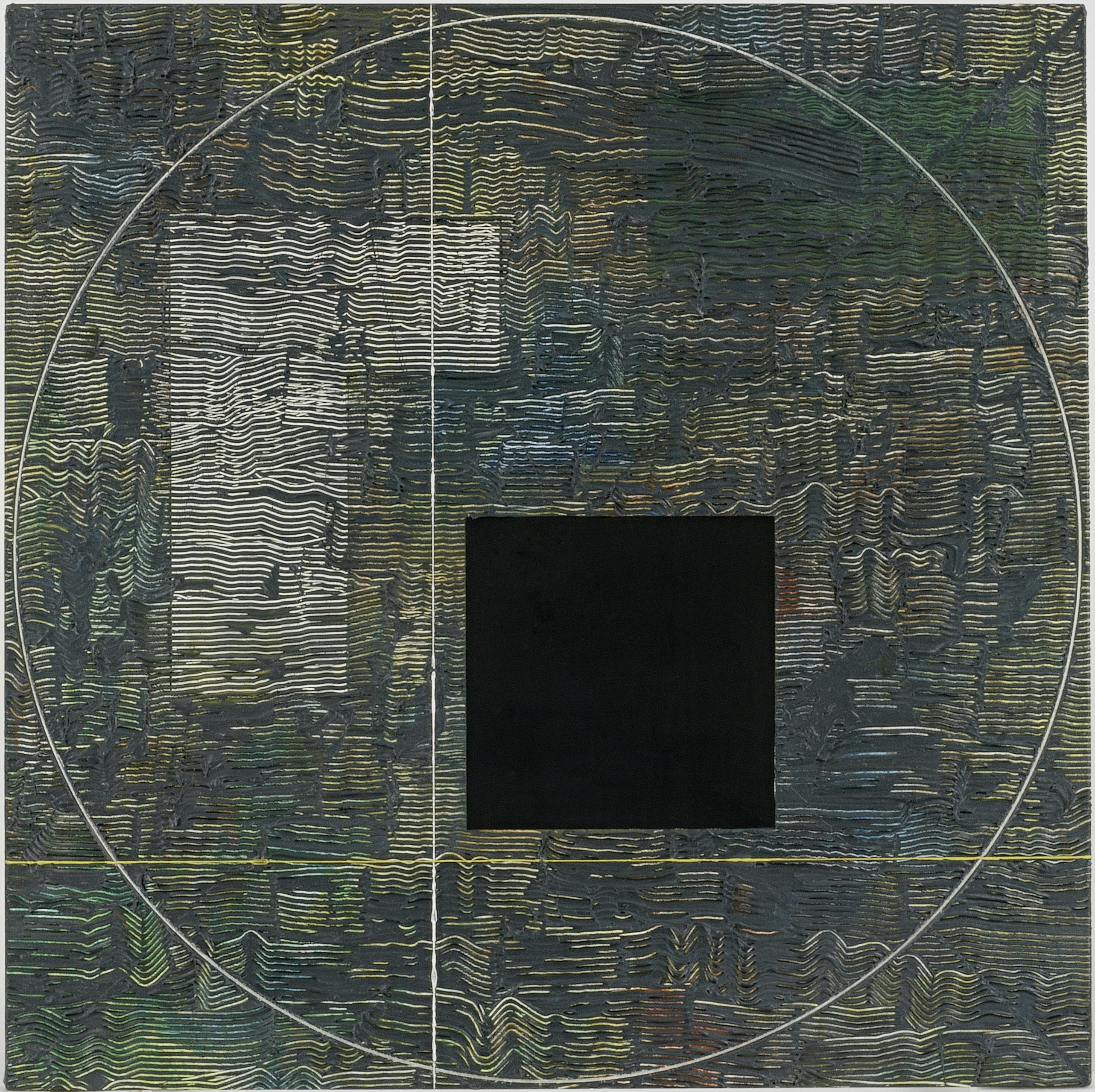Faith Ringgold
(1930–2024)Multidisciplinary artist Faith Ringgold explores themes of family, gender inequality, and racism.
Biography
Ringgold grew up in 1930s Harlem surrounded by the influence of the Harlem Renaissance.
She was also affected by the economic recession of the Great Depression. As she was often affected by asthma complications that left her bedridden, Ringgold sought relief in making art. She obtained skills such as sewing from her mother, a designer. Ringgold’s curiosity about art continued through high school and at the City College of the City University of New York, where she obtained her BA.
Particularly known for her story quilts, which fuse traditional quilting techniques with narrative storytelling, Ringgold has always been a vocal and visible advocate for equality and artistic freedom. Through these story quilts, Ringgold explores different themes of African American identity, cultural heritage, and social justice, creating powerful visual narratives that challenge head-on the established art norms. Her work from the late 1960s and 1970s has had a longlasting impact on generations of artists and activists. Ringgold also initiated the first rally of Black artists to protest the absence of Black art in an exhibition at the Whitney, played a pivotal role in the feminist art movement, and, alongside daughter Michele Wallace, cofounded the Women Students and Artists for Black Liberation group in 1970.
The Studio Museum in Harlem presented Ringgold’s works in Stitching Memories: African American Story Quilts (1989); The Bearden Project (2011); Collected, Propositions on the Permanent Collection (2009); and A Constellation (2015). Ringgold’s first story quilt, Echoes of Harlem (1980), is in the Studio’s permanent collection.
Exhibitions and Events
Faith Ringgold
(1930–2024)Multidisciplinary artist Faith Ringgold explores themes of family, gender inequality, and racism.
Echoes of Harlem, 1980
Biography
Ringgold grew up in 1930s Harlem surrounded by the influence of the Harlem Renaissance.
She was also affected by the economic recession of the Great Depression. As she was often affected by asthma complications that left her bedridden, Ringgold sought relief in making art. She obtained skills such as sewing from her mother, a designer. Ringgold’s curiosity about art continued through high school and at the City College of the City University of New York, where she obtained her BA.
Particularly known for her story quilts, which fuse traditional quilting techniques with narrative storytelling, Ringgold has always been a vocal and visible advocate for equality and artistic freedom. Through these story quilts, Ringgold explores different themes of African American identity, cultural heritage, and social justice, creating powerful visual narratives that challenge head-on the established art norms. Her work from the late 1960s and 1970s has had a longlasting impact on generations of artists and activists. Ringgold also initiated the first rally of Black artists to protest the absence of Black art in an exhibition at the Whitney, played a pivotal role in the feminist art movement, and, alongside daughter Michele Wallace, cofounded the Women Students and Artists for Black Liberation group in 1970.
The Studio Museum in Harlem presented Ringgold’s works in Stitching Memories: African American Story Quilts (1989); The Bearden Project (2011); Collected, Propositions on the Permanent Collection (2009); and A Constellation (2015). Ringgold’s first story quilt, Echoes of Harlem (1980), is in the Studio’s permanent collection.







